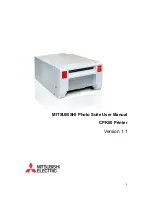
ZV
O
RK
NOX
IOUS - User Manual
A brief introduction to Additive Synthesis
A majority of synthesizers are based on a particular form of synthesis called “subtractive
synthesis”. It consists in producing a spectrally rich wave form, such as sawtooth, square
or noise and applying a filter on these wave forms to remove, or subtract, parts of their
spectrum. By varying the types of filters and their parameters, they can produce a fairly
wide variety of sounds.
Additive synthesis works the other way around. It consists in building this rich spectrum
from scratch by adding up individual sinusoidal oscillators, called partials in Noxious. Sine
waves have the particularity of producing sound in a single frequency band of the
spectrum. By adding up multiple sine waves of different frequency, we can, in theory,
reproduce any frequency spectrum. In fact, science demonstrates that any sound of any
length can be created with an infinite number of sine waves, properly tuned and equalized.
This of course isn't practical and in reality additive synthesis constrains you to a finite
number of sinusoidal oscillators but with controllable pitch and level. Typical sounds
consists of hundreds of sine waves so controlling each one of them is a bit of a challenge.
We will see how Noxious handles the problem later on but in the mean time, let us see
how typical sounds are built from these individual partials.
Harmonic sounds
Musical harmonic sounds, such as created by acoustic instruments or analog subtractive
synthesizers, are produced by periodic wave forms. The frequency of these wave forms
determine the pitch of the note. Typical periodic wave forms in subtractive synthesis
include sawtooth, triangle and square waves. They are all made up of sine waves of
frequencies multiple of the wave form's note frequency. This note frequency is called
fundamental frequency
in additive synthesis. For example, if you hit the A4 key on your
keyboard, which corresponds to a frequency of 440 Hz, and produce a saw tooth wave
form, this saw tooth is in fact made up of sine waves of frequency 440 Hz, 880 Hz, 1320
Hz or 1760 Hz (or 1 x 440Hz, 2 x 440Hz, 3 x 440Hz and 4 x 440Hz). The multiples of the
fundamental frequency are called
harmonics
. The sine waves also have a particular
amplitude but these amplitudes only change the timbre of the wave, not its note frequency
or harmonicity. This difference in amplitude is what makes a sawtooth sound different from
a square wave.
Inharmonic sounds
The vast majority of sounds are not harmonic or tuned. Percussion or noise sounds for
instance don't have a clear pitch and thus don't have partials tuned so simply as harmonic
sounds. In fact most inharmonic sounds have partials tuned with no relation between one
another. In reality, acoustic instruments are not totally harmonic in the pure sense of the
term but are almost harmonic. Their partials are not strictly tuned to multiples of the
fundamental frequency and this is what gives their richness as this introduces some slight
chorus / beating effects. Typical inharmonic sounds are metallic sounds, such as mistuned
bells or rigid strings, and these can be easily built from harmonic sounds by detuning some
of their partials.
5






































